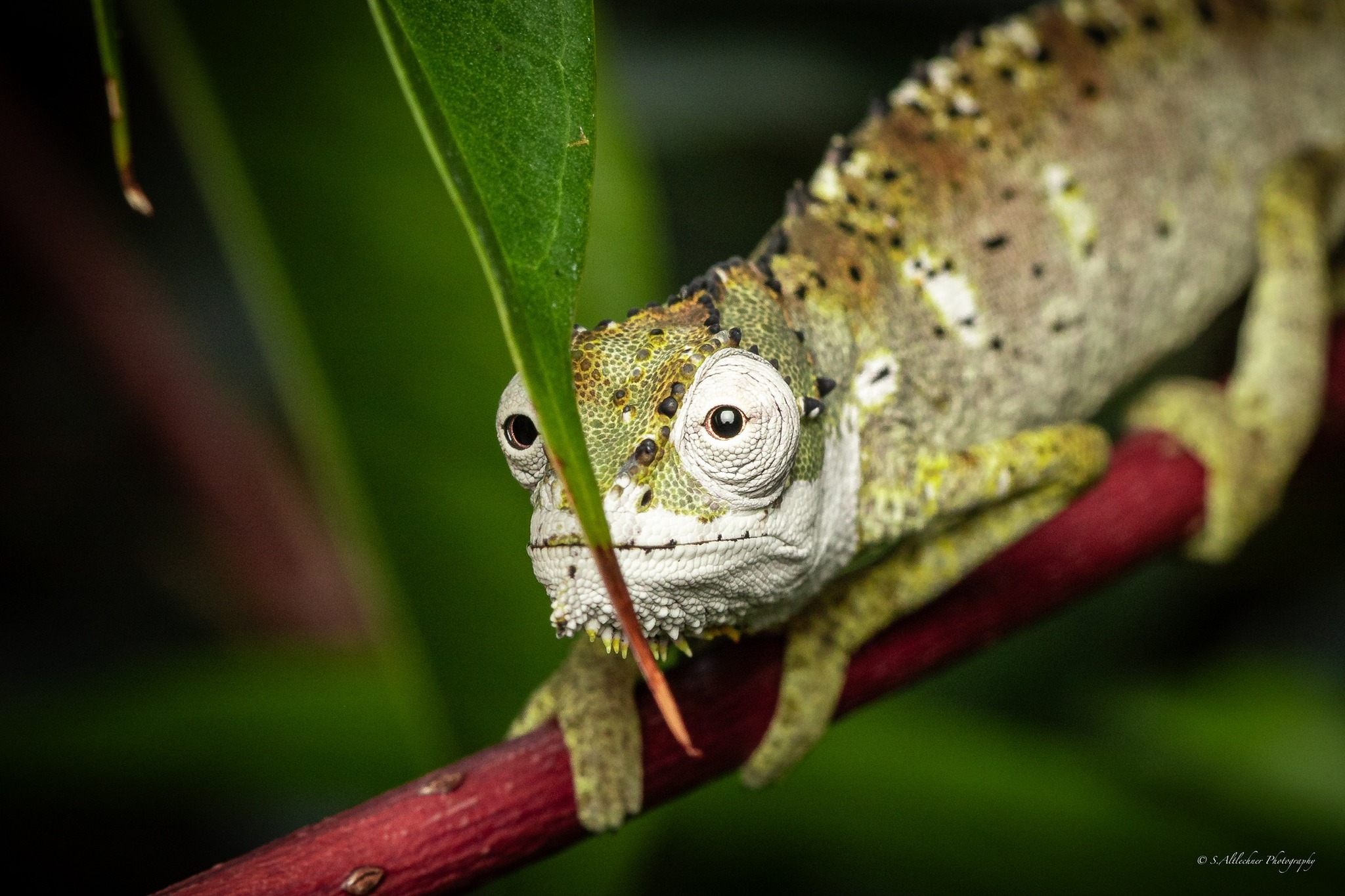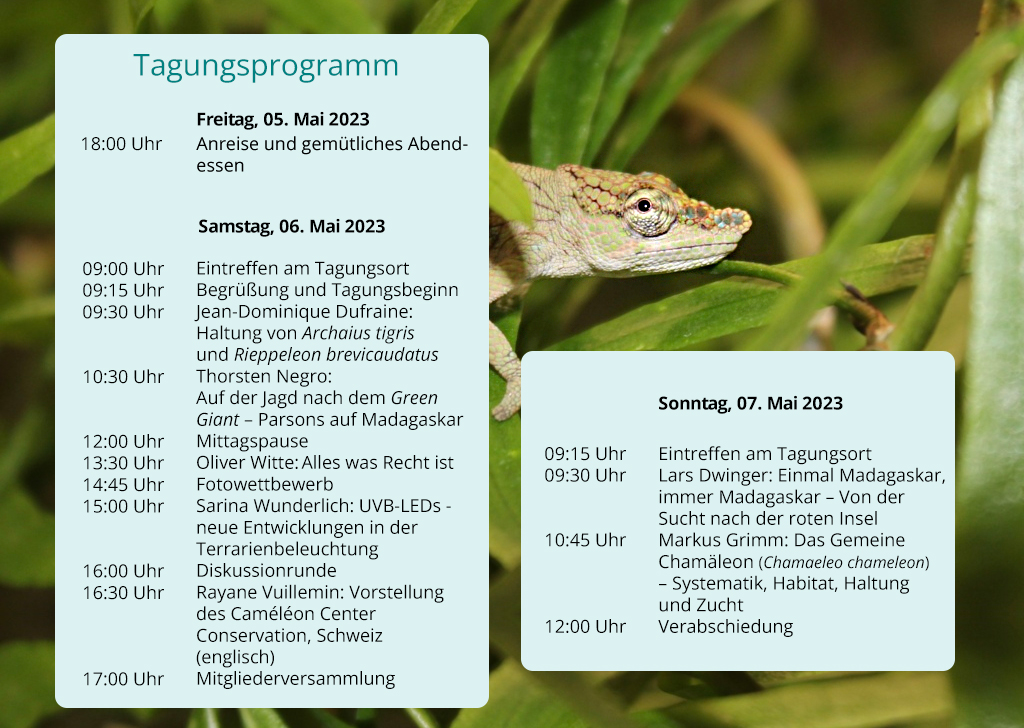Until now, there was no book that dealt with the keeping of the tiger chameleon. You had to painstakingly search for individual reports on keeping tiger chameleons from various sources and puzzle together small pieces of information to form a larger unit. With the newly published book by Markus Grimm, who has been a member of the AG Chamäleons for almost 20 years, this has now changed. Markus Grimm was responsible for the first breeding of the tiger chameleon in 2004 and teaches courses on chameleons in Switzerland.
The first quarter of the book is about chameleons in general. The distribution and the diversity of the different species and their habitats are presented. A brief overview of possible diseases of chameleons in terraristics as well as tips on what should be considered when buying a chameleon completes this part of the book. Then it’s on to the tiger chameleon itself. The distribution and habitat of the small chameleons on the Seychelles islands of Mahé, Praslin and Silhouette are presented. This is followed by herpetoculture: basics such as terrarium size, ventilation and climate technology are explained as well as CITES listing and corresponding keeper obligations in Germany, Austria and Switzerland. In the biology of the tiger chameleon, some information is repeated and specified for the species. The sex determination of the tiger chameleon is explained in detail so that even a beginner should be able to select suitable animals for a small breeding group after reading the book. The author gives concrete recommendations on food quantity and food insects. Many personal experiences of the author form the main focus of the book. The book concludes with a detailed section on the reproduction of the tiger chameleon in the terrarium. Mating, pregnancy and egg-laying are discussed in richly illustrated detail. The author also dispels the myth that Archaius tigris only lays its eggs in leaf axils. It does show this behaviour frequently, but there are also tiger chameleons that bury their eggs in the ground like other egg-laying chameleon species of the Indian Ocean. Egg incubation and hatching as well as the rearing of the young complete the species presentation.
The book is aimed at anyone who is considering keeping Archaius tigris. The large font makes it easy to read. In some places, the lack of picture descriptions, some technically vague information and a lot of detached photos disturb the reading flow a little. The first quarter of the book also sometimes gets lost in other chameleon species. However, it then finds its way back to the tiger chameleon to deliver the world’s first book of its kind on Archaius tigris. The advanced chameleon keeper will certainly enjoy the last third of the book most, with many details on the propagation of the species and rearing of the young. For the novice keeper, the book offers a great deal of very valuable information for good, chameleon-friendly husbandry.
The book is only available in German. It is self-published and can be ordered from the author.
The tiger chameleon (Archaius tigris) – keeping, care and reproduction
Markus Grimm
131 pages, Self-published
ISBN 978-3-033-09238-9
currently at the introductory price of 20 CHF/€ excluding shipping
otherwise 22,90 CHF (currently 22,90 €) excluding shipping
Order directly from the author markus-grimm@gmx.ch





